Here in Central New York, spring comes later than in most parts of the country. We’ve even had snowstorms on Mothers’ Day!
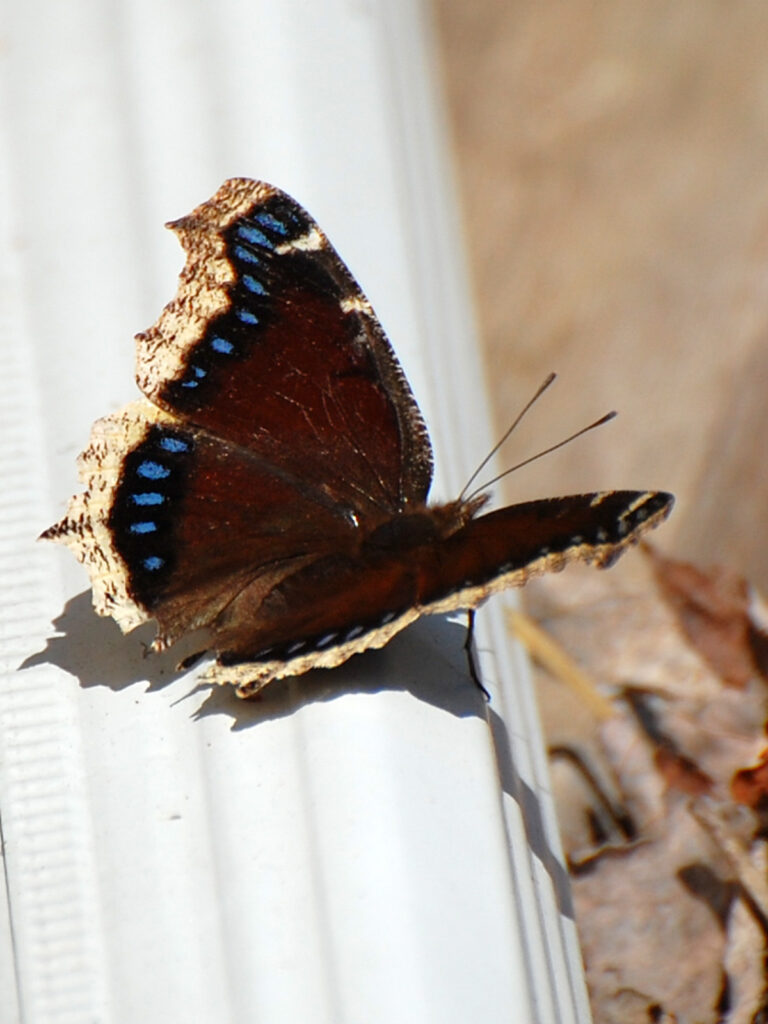
We usually see mourning cloaks first, since they overwinter as adults.
We saw this one in April, early for a butterfly, and we’ve even seen them at the end of March.
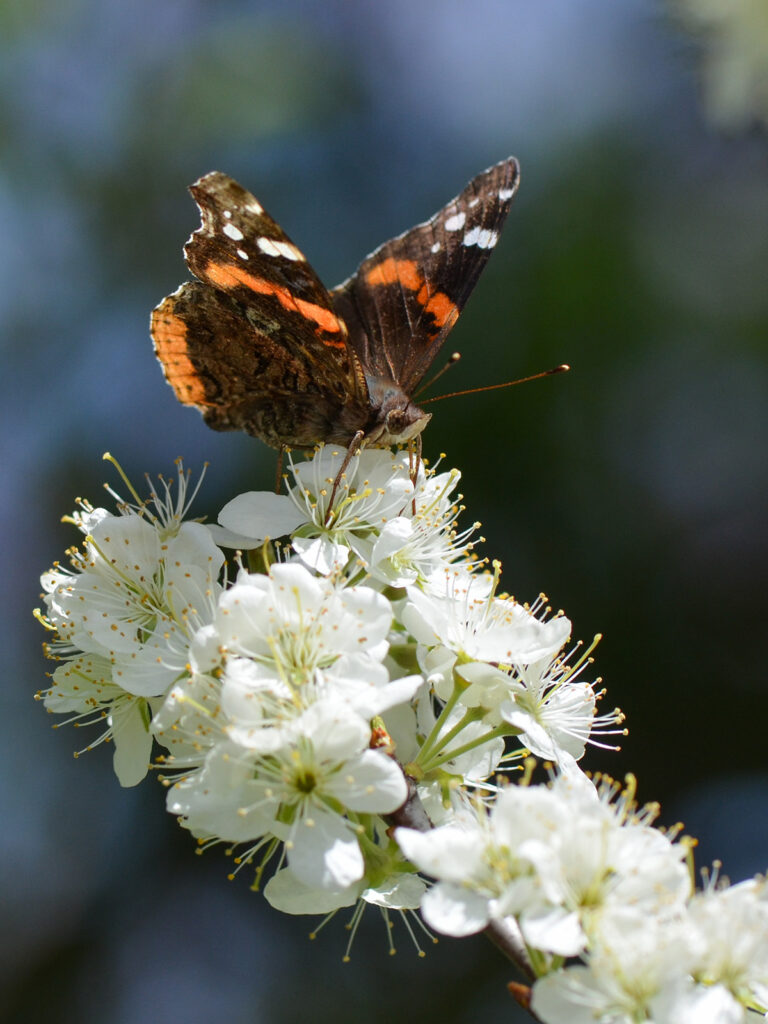
Butterflies need warm temperatures to fly, and many of them overwinter in other stages (such as eggs, larvae, or pupae), so they take a while to become adult butterflies.
Consequently, we don’t see as many butterflies in the spring as we do in summer and fall, so we don’t put as much effort into planting butterfly-specific plants for spring.
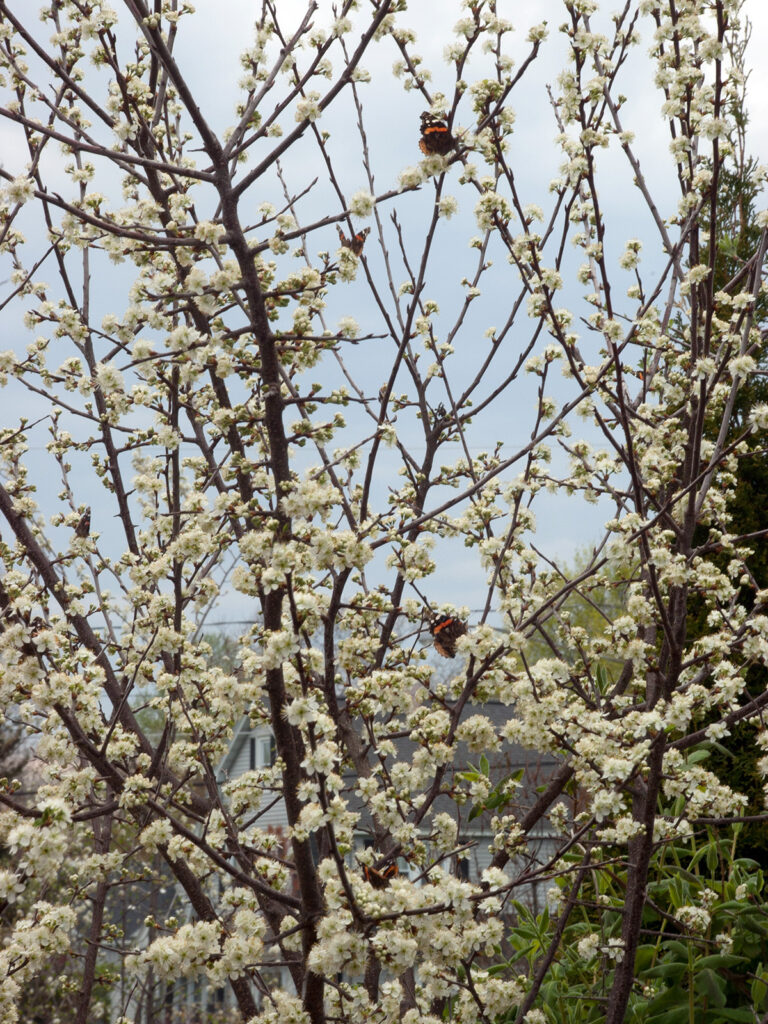
In 2012 — an unusually warm year — we saw more red admirals at once than we had ever before.
(In 2011, we saw lots of admirals as they were migrating through our yard, but only a couple at any one time.)
This “flock” of admirals spent the entire afternoon and into the evening on this beach plum. There must be an unusual amount of nectar in this native plum.
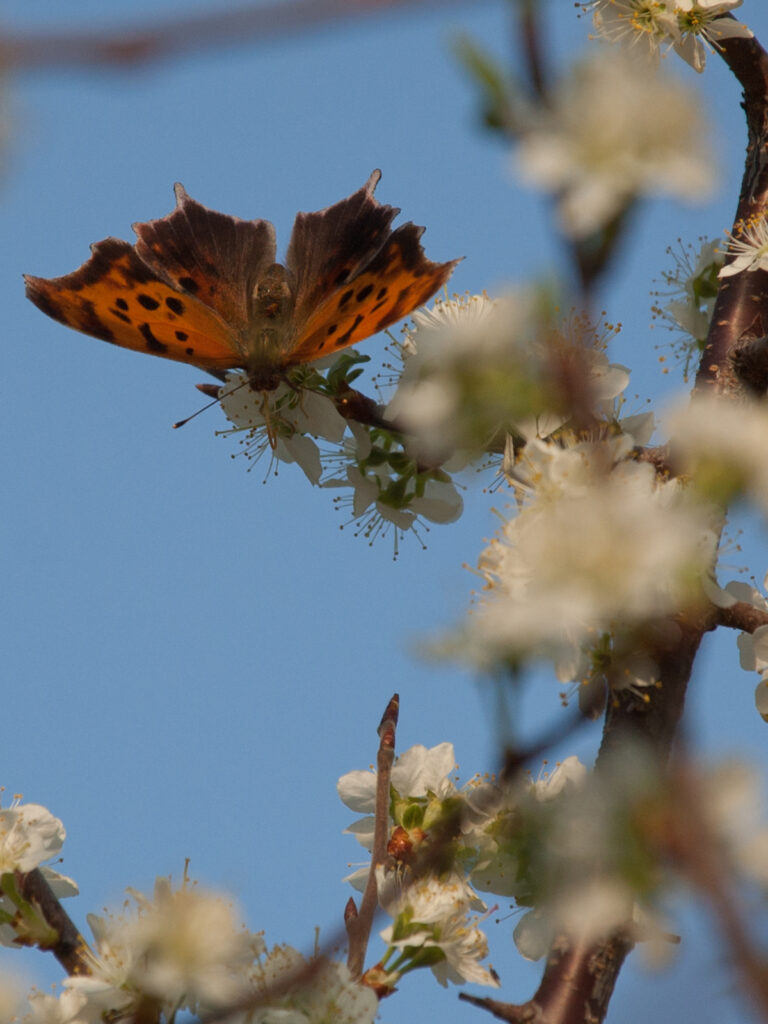
Later in the afternoon, a question mark butterfly joined the admirals.
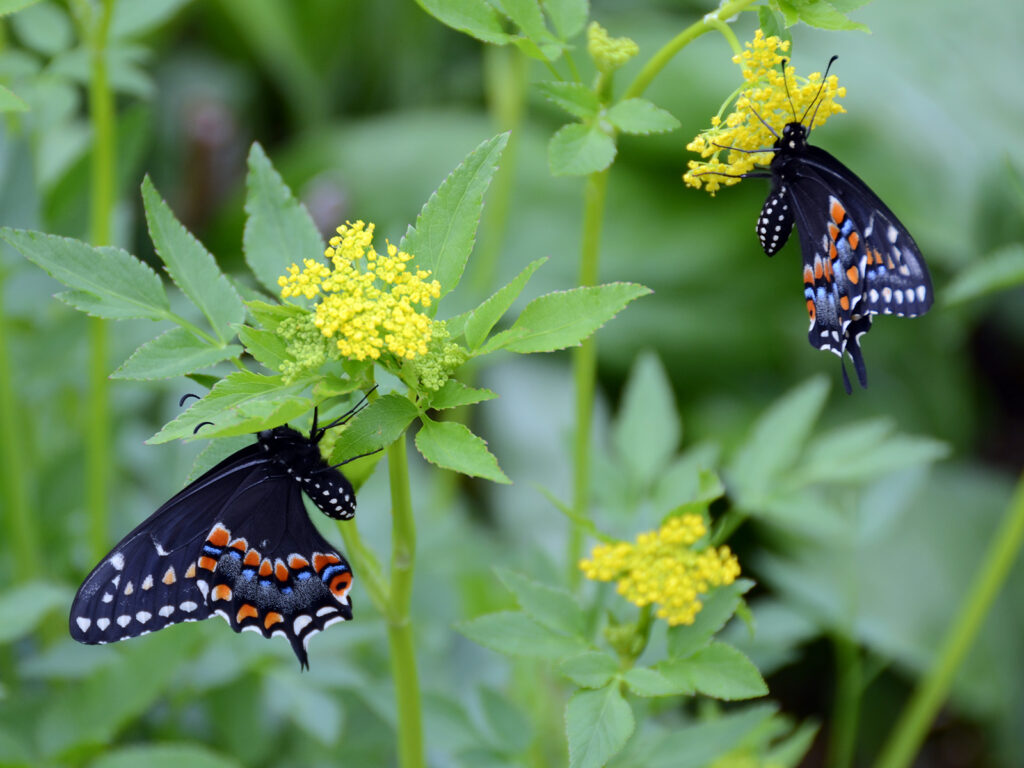
We saw these black swallowtails on zizia (aka golden alexander), and I at first just thought they were getting nectar.
But when I researched a bit, I learned that zizia is actually the native host plant for black swallowtails. In our yard, we had noticed them mostly laying eggs on dill and sometimes on parsley.
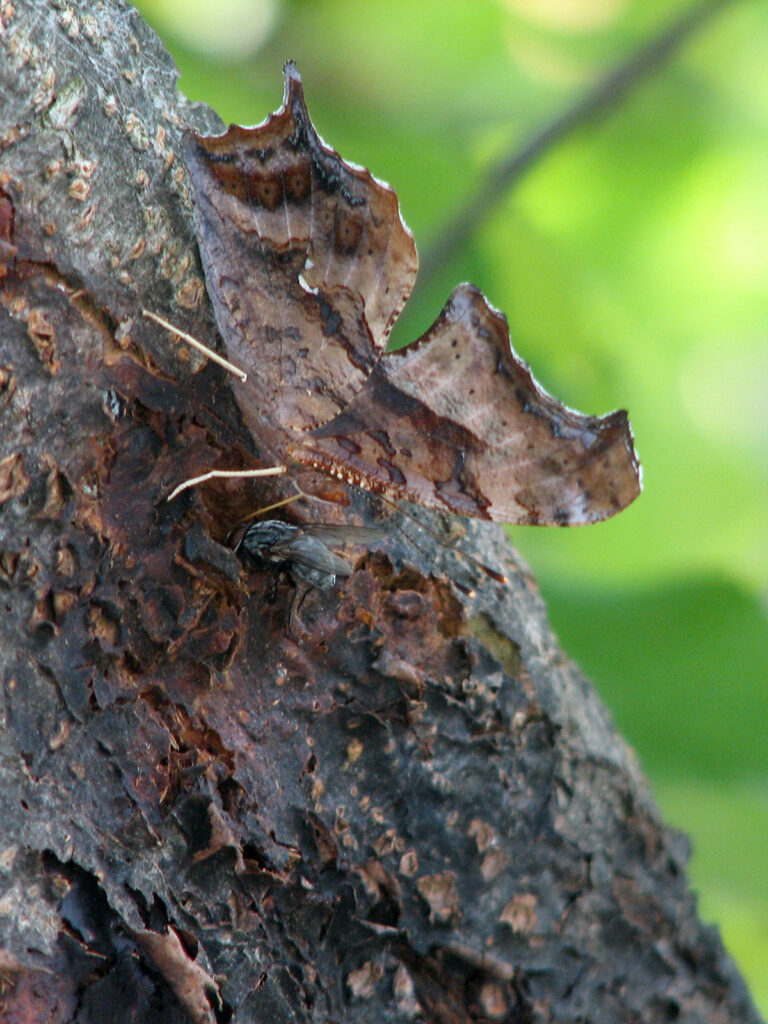
Sap can even be food for a butterfly in spring!
